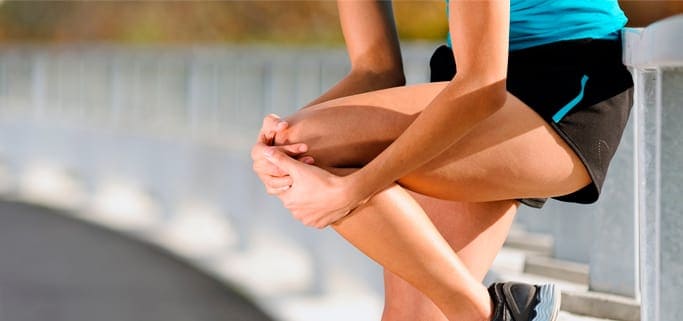
Athletic injuries in young athletes are on the rise, causing concern among parents, coaches and athletes about the dangers of various sports. In response, researchers have been working to identify underlying problems that may predispose certain athletes to injury, and have uncovered significant findings about the characteristics that distinguish female athletes from their male counterparts.
One of the most frequently occurring and most severe athletic injuries is a rupture of the knee ACL, or anterior cruciate ligament. Not only is an ACL rupture painful and debilitating, but it can be career-ending for any athlete. Incidence of ACL rupture in female athletes is significantly higher than in male athletes in the same sports.
Many factors come into play that can lead to an ACL rupture. Individual anatomy, training status and lack of experience can predispose some athletes to injury. ACL injuries are more likely to occur in sports that demand rapid changes in direction and alterations in trunk position when stopping, landing and cutting.
Control of the trunk and core can have a profound effect on dynamic stability of the lower extremities. Poor trunk control puts extra torque on the knee, straining the ligaments that hold it in place. Because females have a broader pelvis than males, the angle from hip to knee is more pronounced, placing the lower extremities at greater risk for valgus collapse and injury.
Core stability is foundational to dynamic trunk control, facilitating the transfer of forces from the upper to lower extremities. A stable core plays a critical role in maintaining equilibrium, and regaining it when disrupted, by overriding the forces of gravity and momentum. When equilibrium is lost, those forces impact the lower extremities, especially the knee.
In a recent study, Zazulak et al. (2007) tested 137 male and 140 female college athletes for trunk displacement after force release, with the goal of identifying predictors of knee injury risk.
Trunk displacement was greater in athletes with knee, ligament, and ACL injuries than in uninjured athletes.
The research team found that:
The takeaway message from this study and others like it is that factors predisposing athletes to knee injury can be identified in individual athletes, and measures can be taken to correct motor deficiencies to prevent and reduce the risk of knee injuries. Training interventions should incorporate core stability training, proprioception exercises, and disruption and correction of body sway to reduce the risk of ACL injuries in both male and female athletes.
Measures of trunk displacement and other movement deficiencies require specialized equipment to detect and quantify abnormalities. At NYDNR, our expert team of sports medicine professionals uses cutting edge technology to detect and correct motor deficits. C.A.R.E.N, our computer assisted rehabilitation environment, maps an athlete’s movements by measuring forces during specific activities. The same technology can then be used to correct deficiencies through retraining.
Do not wait until you are injured to correct motor deficiencies in your sport. Contact NYDNR today for a complete analysis and retraining, to keep you in the game, injury-free.
Source
Zazulak, Bohdanna T., et al. “Deficits in neuromuscular control of the trunk predict knee injury risk: prospective biomechanical-epidemiologic study.” The American journal of sports medicine 35.7 (2007): 1123-1130.
Dr. Lev Kalika is a world-recognized expert in musculoskeletal medicine. with 20+ years of clinical experience in diagnostic musculoskeletal ultrasonography, rehabilitative sports medicine and conservative orthopedics. In addition to operating his clinical practice in Manhattan, he regularly publishes peer-reviewed research on ultrasound-guided therapies and procedures. He serves as a peer reviewer for Springer Nature.
Dr. Kalika is an esteemed member of multiple professional organizations, including: